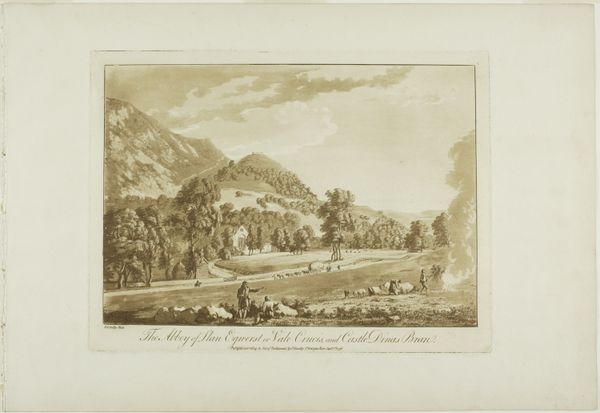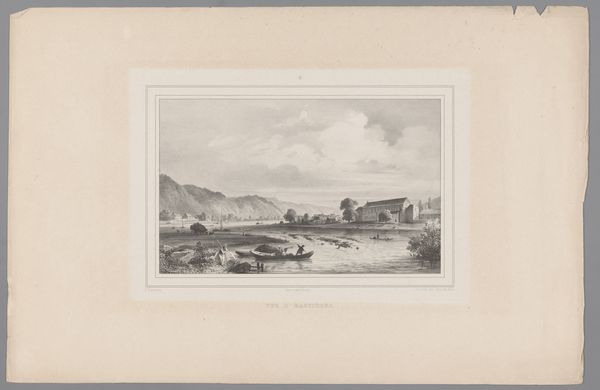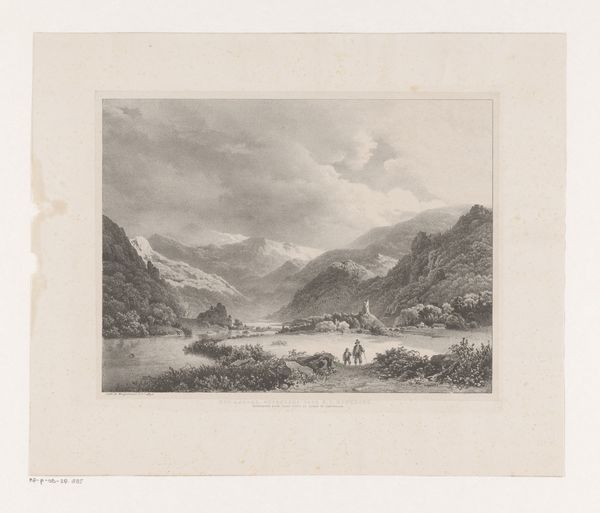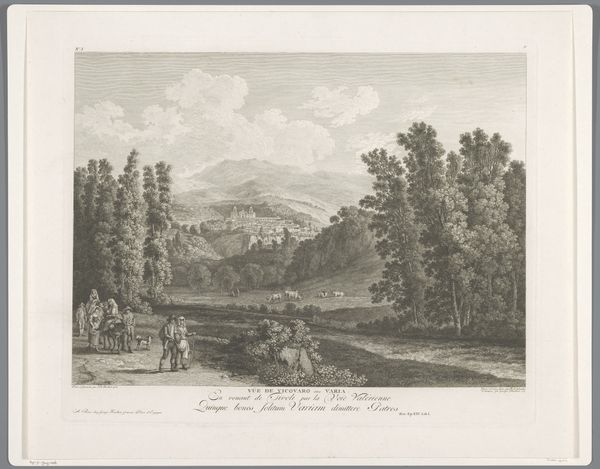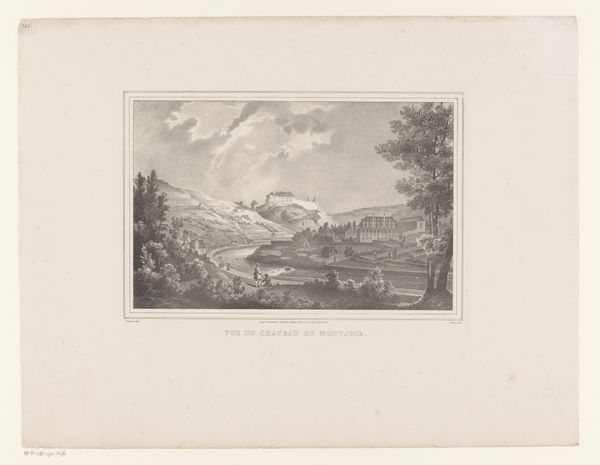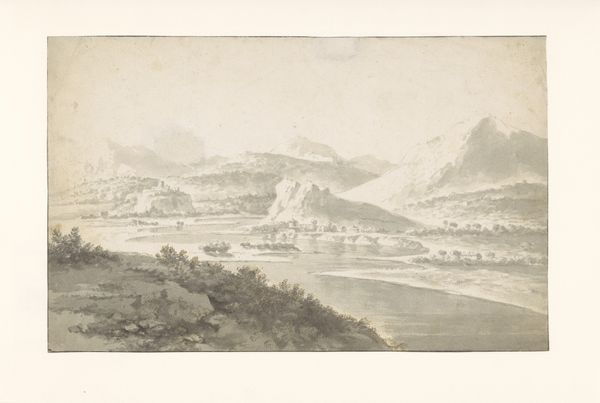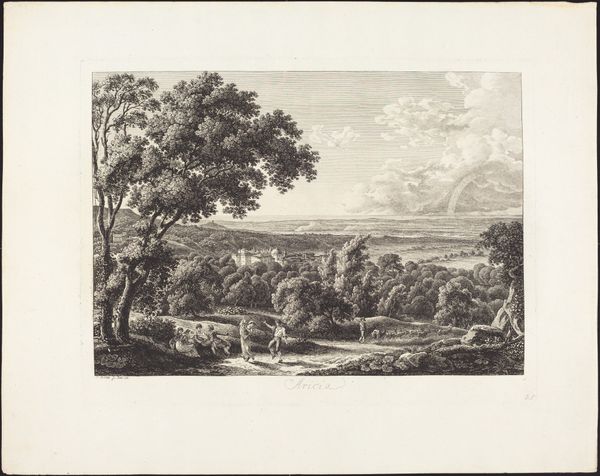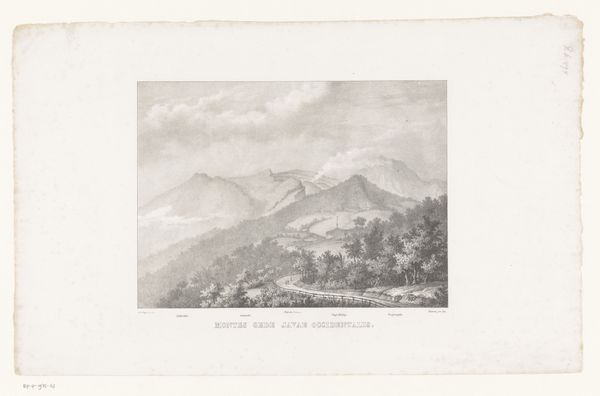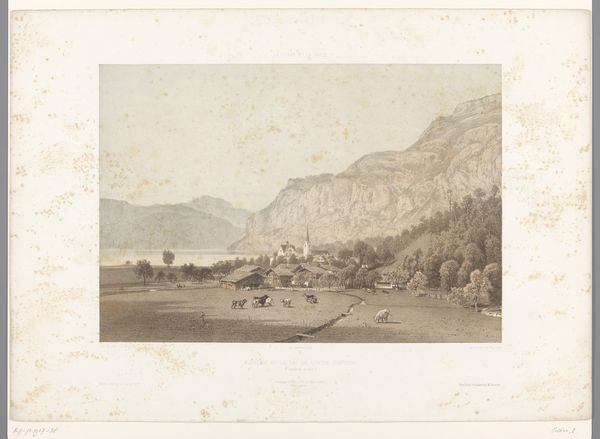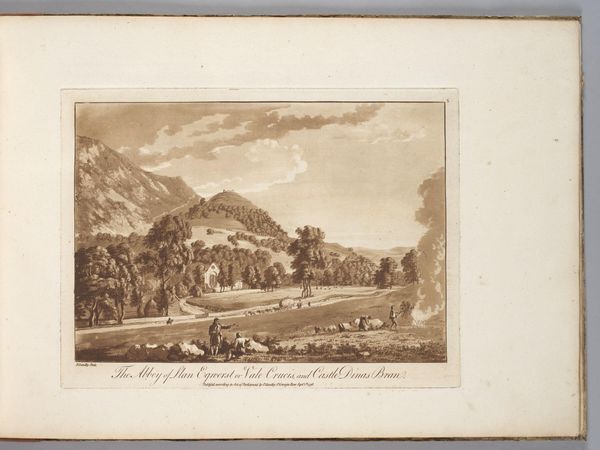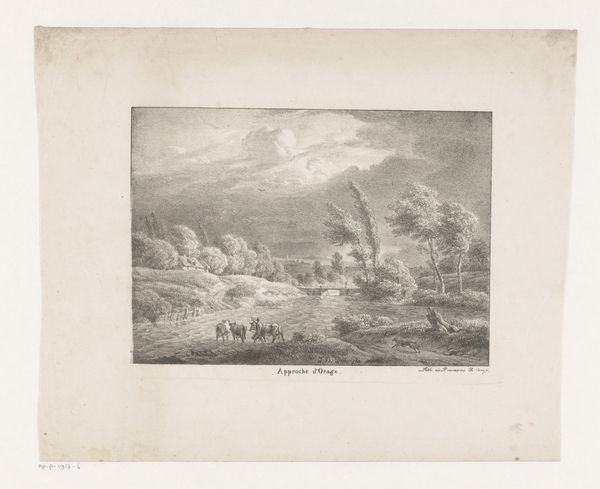
drawing, print
#
drawing
# print
#
landscape
#
orientalism
#
realism
Dimensions: height 269 mm, width 408 mm
Copyright: Rijks Museum: Open Domain
Curator: Before us hangs "Gezicht op Darábgerd," a print and drawing made between 1843 and 1854 by Eugène Flandin, currently held in the Rijksmuseum collection. Editor: It has such a tranquil feel, a soft light bathing the rugged landscape. It reminds me of early travel photography, a documentarian's eye combined with an artist’s sensibility. Curator: Indeed. Flandin, alongside Pascal Coste, accompanied the French ambassador to Persia in the 1840s. This image is particularly interesting in the context of Orientalism; Flandin’s role was to document Persian architecture, landscapes, and people. The drawing was made into a print in order to broadly circulate these observations back in Europe. Editor: That single dome emerging from the town, dwarfed by the mountains – the symbol seems deliberately chosen, marking power but also fragility. It speaks to the passage of time, resilience in the face of immense geological forces, and even conquest. Look at the watering animals as part of everyday life – a return to nature’s pace and laws. Curator: Flandin’s artistic choices reflect specific political motivations and wider public interest. Consider how "Realism," as a contemporary artistic movement, sought truthful portrayals, yet here it is filtered through the lens of colonial engagement and scientific observation and recordkeeping. How 'truthful' is such a scene in its intention versus the experience itself? Editor: That’s a potent point. It’s never just a straightforward record, is it? Flandin selects, arranges, perhaps idealizes. Those two figures in the midground, observing—are they included as markers of scale, as picturesque locals, or both? They give the modern viewer a point of entry, but one deliberately chosen by the artist. Curator: Exactly. The act of creating and then circulating images like this contributed to Europe’s understanding and perception of the Middle East at the time, which had specific political and economic implications, shaping its public image as an ‘exotic’ region ready to be observed, controlled and researched. Editor: Thinking about the dome again - the subtle integration of Eastern building styles with Western artistic interpretation… I appreciate how the scene’s simplicity emphasizes those grander themes about cultural interaction. Curator: This landscape goes beyond mere depiction, capturing that complicated dance of power, representation, and historical moment—still potent after all this time. Editor: Yes, the weight of all those layers leaves a lingering impression.
Comments
No comments
Be the first to comment and join the conversation on the ultimate creative platform.
